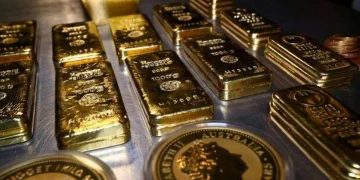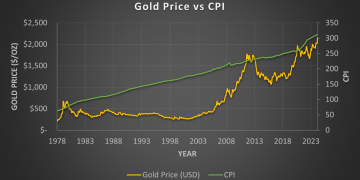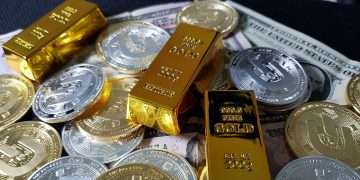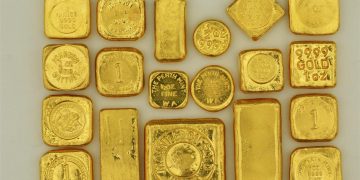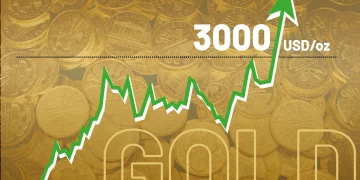The gold market has long been a cornerstone for investors seeking safety in times of uncertainty. As a tangible asset, gold has historically been viewed as a hedge against inflation, currency devaluation, and economic turmoil. However, the current gold market in 2025 presents an unprecedented level of volatility, challenging even the most experienced analysts and investors. This volatility raises an essential question: Can expert forecasts still provide reliable guidance in a market that appears to be in constant flux?
In this article, we’ll explore how today’s gold market is evolving, the challenges that volatility presents to experts, and how investors can make informed decisions by analyzing diverse viewpoints from leading gold analysts. By examining the differences between expert predictions and actual market behavior, we can uncover strategies to better navigate this complex and often unpredictable market.
Introduction: The Challenges of Forecasting in Volatile Markets
In 2025, the gold market faces a unique set of challenges. A decade of economic unpredictability, combined with shifts in geopolitical landscapes and financial markets, has created an environment where gold prices are influenced by a multitude of factors. For example, rapid changes in interest rates, inflation expectations, and global conflicts have all had a direct impact on gold prices. Historically, forecasting gold prices was an arduous task, but relatively stable conditions made long-term predictions more reliable. Now, with rapid economic shifts and unpredictable geopolitical events, even seasoned analysts are finding it difficult to keep up with the pace of change.
The traditional methods of forecasting, often reliant on historical trends and models, are being stretched to their limits. Factors that previously held predictable patterns, such as interest rates, stock market behavior, and even the U.S. dollar’s strength, no longer seem as predictable. When inflation rates and currency values fluctuate dramatically, it becomes increasingly difficult to project where gold will move in the near and long term. As a result, many of the forecasts offered by experts in the industry must be taken with a grain of salt, leaving investors wondering how they can best navigate this volatile market.
Key Insights from Leading Gold Analysts in 2025
Despite the uncertainty, some of the world’s leading gold analysts remain optimistic about the asset’s long-term value. In 2025, these analysts offer a variety of viewpoints on how gold may perform in the coming years. Key factors shaping their outlook include inflation rates, central bank policies, and global economic trends.
1. The Inflation Hedge Argument
One of the central arguments made by analysts regarding the gold market in 2025 is its role as a hedge against inflation. Inflationary pressures are at the forefront of many economists’ minds, especially as central banks grapple with the impact of pandemic-related fiscal stimulus and rising commodity prices. As inflation remains above historical averages in many economies, analysts predict that gold will continue to serve as a safe haven for investors looking to preserve wealth in real terms.
Michael Goldstein, a leading precious metals strategist, posits that gold will perform particularly well if inflationary concerns continue to rise in the coming years. He highlights that even though gold’s price may fluctuate in the short term, the long-term trend will likely be bullish as investors look for ways to protect their portfolios from inflationary erosion.
2. Interest Rates and Central Bank Policies
Interest rates are another major factor influencing gold prices. In 2025, with central banks around the world taking cautious approaches toward rate hikes, the cost of holding gold relative to interest-bearing assets becomes a crucial consideration. Lower interest rates generally favor gold, as the opportunity cost of holding the precious metal is lower than that of other assets such as bonds or equities. Conversely, rising rates tend to reduce the appeal of non-yielding assets like gold.
Sara Williams, a senior economist at Global Metals Research, suggests that while central banks may raise rates in response to economic recovery, they are unlikely to do so at a pace that would negatively affect gold. Williams believes that even modest interest rate hikes won’t derail gold’s appeal as a hedge against economic instability, especially given the mounting debt levels in major economies.
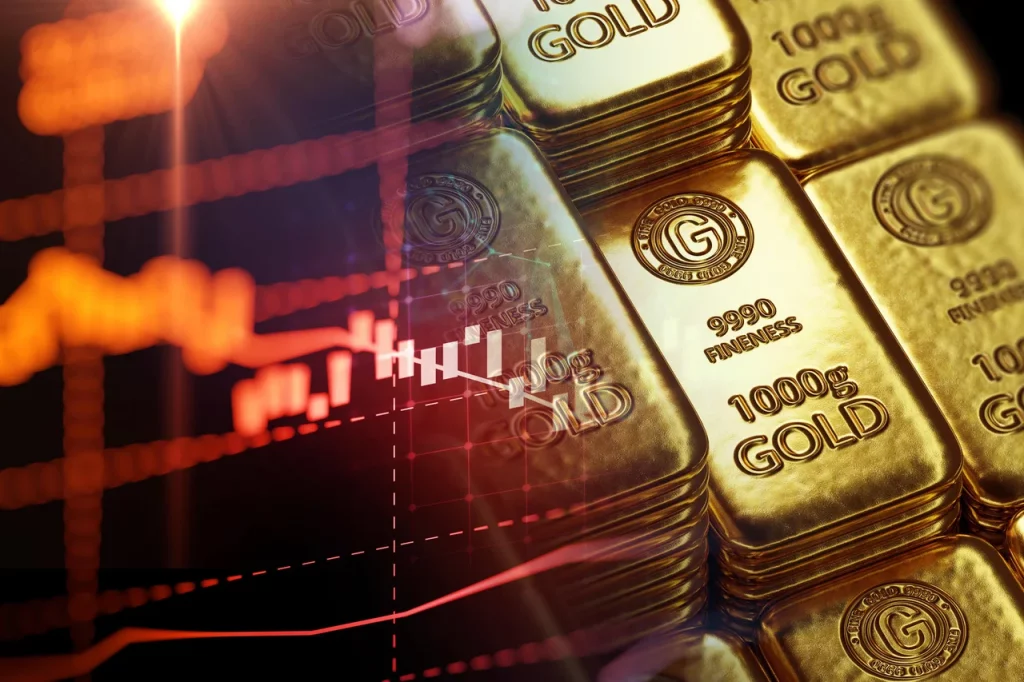
3. Geopolitical Tensions and Safe-Haven Demand
Geopolitical tensions—such as the ongoing conflict between the U.S. and China, along with concerns over the stability of certain oil-producing regions—also play a crucial role in driving up demand for gold. As political instability increases, investors often flock to safe-haven assets like gold, driving prices higher in times of crisis. In 2025, the geopolitical landscape remains volatile, with tensions in the Middle East and trade negotiations between the U.S. and China continuing to influence investor sentiment.
John Adams, a former government advisor and now a consultant on global commodity trends, believes that geopolitical uncertainty will continue to support gold prices. He forecasts that if tensions escalate or major conflicts arise, the price of gold could see significant upward movement, as it has historically been viewed as the ultimate store of value during times of crisis.
Comparison of Expert Predictions vs. Market Realities
While expert predictions about gold’s performance in 2025 generally echo concerns about inflation, interest rates, and geopolitical risks, the market’s actual behavior can often diverge dramatically from these forecasts. Gold’s price is notoriously difficult to predict due to the influence of numerous complex and interwoven factors.
1. Unforeseen Market Shocks
In recent years, the gold market has been susceptible to shocks that analysts could not have predicted. For example, the unprecedented rise in cryptocurrency adoption in 2025 has led some investors to move away from traditional assets like gold in favor of digital currencies. This shift has impacted the market dynamics, making it more difficult for traditional analysts to account for gold’s price movement.
2. Supply and Demand Factors
In addition to the macroeconomic factors influencing the price of gold, supply and demand dynamics also play a crucial role. The mining industry has struggled in recent years with increasing costs and declining ore grades, which has put upward pressure on gold prices. However, the recent advancements in gold recycling and the rising interest in sustainable mining practices have begun to impact the market, with analysts now factoring these new supply-side dynamics into their forecasts.
How to Interpret Divergent Opinions for Better Investment Strategy
With so many conflicting forecasts from experts, how can investors make sense of the gold market and develop an effective investment strategy? The key lies in diversification and understanding the risks involved. While gold is still considered a safe-haven asset in times of volatility, investors must also acknowledge that it is not immune to price swings. Here’s how to approach the current gold market with a well-rounded strategy:
1. Diversification Across Asset Classes
A diversified investment portfolio that includes a mix of gold, equities, bonds, and alternative assets will help mitigate risk. Even if gold continues to perform well as an inflation hedge, relying solely on the precious metal is a risky strategy. Spread investments across various asset classes to ensure that your portfolio remains resilient in the face of unexpected market shifts.
2. Focus on Long-Term Trends
While short-term fluctuations may be challenging to navigate, focusing on long-term trends in gold—such as inflationary pressures, rising geopolitical risks, and central bank policy—can help investors make more informed decisions. As experts like Michael Goldstein suggest, the long-term outlook for gold remains positive, especially if inflation continues to rise.
3. Remain Flexible and Adaptive
Given the unpredictable nature of the gold market, it’s important for investors to remain flexible and adapt to changing conditions. Monitor market signals closely and stay updated on key economic developments, including central bank policies, inflation data, and geopolitical tensions. Being informed allows investors to adjust their strategies in response to new information and emerging trends.
Conclusion
Gold’s volatility in 2025 highlights the difficulties experts face when trying to predict its future price movements. While traditional forecasting methods remain valuable, the modern gold market’s complexity demands a more nuanced approach. By considering diverse opinions from analysts and recognizing the many forces that shape the market, investors can better navigate this volatile landscape. Diversification, a focus on long-term trends, and flexibility in strategy are essential to succeed in an environment where expert forecasts often fall short of capturing the full scope of market realities.















